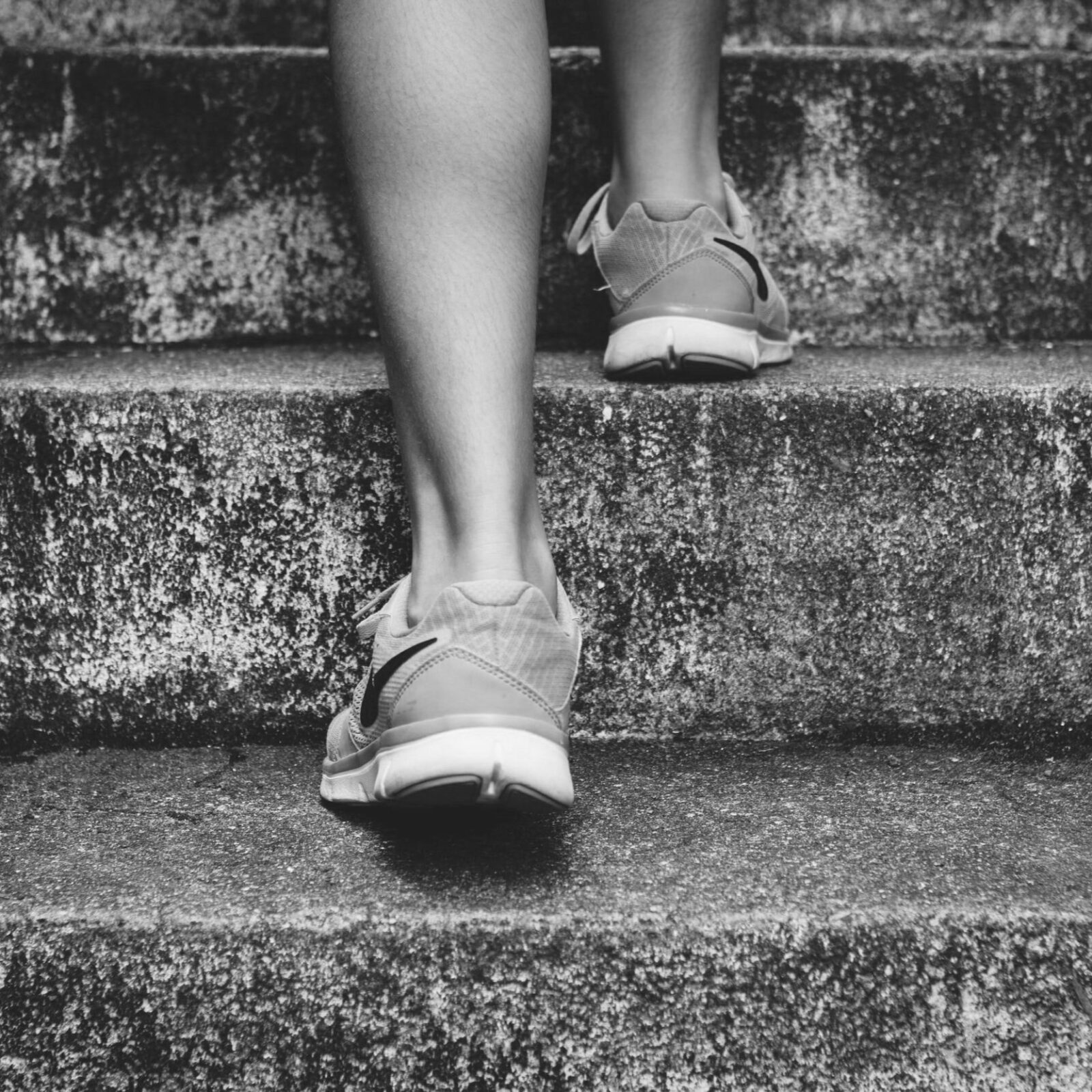By Kathleen Leninger, PT, DPT
Heel strike is often to blame for Achilles’ tendon issues, plantar fascia pain, and patella tendon issues. Research shows that the force loading rate of the shin (tibia bone) is a bigger factor in injury risk than foot strike. The loading rate is how quickly how much force is applied. Ideally, you want the force to be applied to your body at a safe rate and to the areas best capable of absorbing force without injury.
At first glance, a heel strike looks like the worst possible scenario! It creates the biggest slope between your shin and your foot, which is a huge factor in increasing the force loading rate as the front of your foot slaps the ground. However, the bigger problem is typically where your foot is contacting the ground relative to your body. With a heel strike, the foot is almost always out in front of you, without your center of mass (carried in the pelvis) to absorb the force from the ground. This means that the force from the ground has only a few places to go: your foot, shin, or knee.
Instead of trying to change your natural footstrike, what about working on decreasing the distance between your center of mass and where your foot contacts the ground? This will decrease the stress on the structures of the foot and lower leg (muscles, tendons, connective tissue, and bones), and it can help improve your running economy. Here are two cues to try in real time to work on this:1) Land under your hips, and 2) Focus on pushing the ground away instead of reaching for the ground in front of you. This is a great way to start working on improving your load rate!
Foster, J. Achilles Tendinopathy: is foot strike important?. British Journal of Sports Medicine. January 2014.

